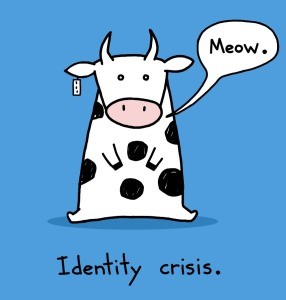Brand Identity
There is a common misconception that the word “brand” is a synonym for logo, or visual marketing. This is actually not the case. Brand identity is the foundation of your company that sets you apart from your competitors in the industry. Yes, the logo is a big part of your brand identity, but your brand identity doesn’t just appear overnight, it takes years to craft and eventually becomes ingrained with the customer’s experience when they come to you.
A brand is the what represents your company when an official spokesperson is not there, and it comes with added perks.
- Allows for price flexibility: A strong brand allows you to charge more for the same product because it comes from you.
- Surpass the competition: Building a brand identity that proves why you are superior to your competitors increases the chances of customers choosing your brand over a similar one.
- Loyalty and recognition: A brand identity is stronger than a sales pitch. It makes your business some more human and relatable.
“Identifying” Your Brand
 It is critical to for every company to build a brand identity, regardless of their size. Your brand identity is the face of your business; it is what helps you retain customers. It is natural for a brand identity to change over time to keep up with new audiences and trends, so developing the right brand identity will help create a stable and consistent tone.
It is critical to for every company to build a brand identity, regardless of their size. Your brand identity is the face of your business; it is what helps you retain customers. It is natural for a brand identity to change over time to keep up with new audiences and trends, so developing the right brand identity will help create a stable and consistent tone.
1. Know Yourself
Before jumping into creating logos or social media, do some soul searching to figure out who your target market is, and how you want to position yourself.
- What kind of goods/services are you going to be selling? What is their quality?
- What are your core values?
- What’s the goal?
- Who is your target market? If you don’t have a user persona, take the time to make one.
2. Create Your Personality
Once you have gotten some of those questions squared away, you need to start creating a personality. What type of company do you want? Do you want to be tech-based or about professionalism? That’s important to know this because that’s how you are going to gear your personality.
3. Find Your Image
Now that you have a decided personality, you can begin developing your brand identity through your website, logo, merchandise, and create a PR strategy. Here are some different formats to keep in mind when creating your brand identity.
-
Font
-
Logo
-
Website
-
Packaging
-
Marketing materials
-
Colors
4. Be Analytical and Recreate
People and companies evolve over time so it is important to always be one step ahead with a refreshed identity to keep customers engaged. You should always track your customers’ overall perception of your company so you can make changes accordingly.
Building Loyalty
Knowing what brand identity is, its essential to keep those customers loyal. Every business invests lots of money in loyalty having programs to keep your customer loyal tie into your identity and keep them coming back.
1. What’s Your Unique Factor?
How are you going to set yourself apart? This is what makes you unique, and your customers want this. Once you know your unique factor, start tying that into your identity, and PR plan.
2. Understand Your Audience
One of the most important factors in creating sales of your brand identity is to know and understand your audience. People want things tailored to their wants and needs, so personalization and promotions can help keep them engaged. It has been said that nowadays, most customers don’t mind if you use their data to give them a more personalized experience. One study showed that 74% of customers are more frustrated by general content than companies who attempt to gather insights from surveys.
Companies must constantly listen to their audience and evolve accordingly if they want to make their customers happy.
3. Have a Moving Story
Everyone loves a good story! Having one helps tie in your customer to the brand. People are more inclined to buy when they are emotional. Having a more emotional story keeps the customer engaged, and makes them want to buy from you. 
4. Consistency Is Key
In an ever-changing world, being consistent is super important and keeping your message the same is very important for customers. Plan a way to keep this the same. Either through your blog or however, you want to get your message across.
5. Teamwork
Teamwork makes the dream work! Partnering and building relationships with other brands in your industry can help grow your brand identity.
6. Be Transparent, And Believable
Being transparent and honest with the customer is important for any business. Today’s customers prefer communicating with companies that are actually interested in what they have to say and their satisfaction.
Making Your Brand Promise

Your brand promise is your 10 Commandments. It’s what you promise to deliver to customers each and every day. A company with a strong brand promise is bound to be successful. A great brand identity helps maintain consistency with online and offline marketing strategies and can even improve potential sales. Keeping the customer happy and building long-term relationships with through a well-developed brand identity is the key to success.

